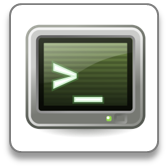 ADOxx BUILDING BLOCKS
ADOxx BUILDING BLOCKS
 | REMOTE MODEL DOCUMENTATIONDo you want to provide the functionality in your tool to produce reports in different formats and styles? This building block enables remote functionality to generate (online and offline) report formats such as XML, HTML, PDF on a server and pass it pack to the client triggering the interaction. The Remote Model Documentation Building Block can be used as a service, hosted on ADOxx.org, integrating a minimal set of configuration and client functionality in your tool. Alternatively, and in case you want to extend and modify the standard set of reports, you can also download the source code and run it in your infrastructure! |
 | ADOxxWEB APIThe ADOxxWeb API provides means to access the models in your modelling tool remotely through standard web-interfaces. This building block is provided as a Java-based implementation of interfaces, wrapping AdoScript calls to the ADOxxWebService and exposing these through SOAP interfaces. As a generic, modelling language independent implementation, a base set of calls is realized, categorized in read and write interactions. In case you want to integrate more specifically with functionality of your modelling tool (e.g. modelling language AdoScript) you can extend the source code to your needs and run the application in your infrastructure. |
| | ADOxxWEB DashboardThe ADOxxWEB Dashboard building allows you after the integration into your development environment the monitoring of your model/data set in a dashboard. This building block consists of a web service project that performs the transformation of your models/data with an XSLT processor from the so called cockpit.xml to the data.json that is than used for the deployment of the dashboard. The implementation is dependent of the respective modelling language and has to be adopted in the cockpit.xml. |
| | ADOxxWEB SimulationThe ADOxxWEB Simulation provides a fast and extendible service able to simulate business process executions. The service is provided through a REST interface that take as input the model to simulate and some simulation parameters and return an XML with simulation results. The service is focused on business process models but is flexible enough to be adapted and to simulate any kind of models. The Simulation service provide also an asynchronous html/javascript client in order to use and test the service without integrate it in a tool. |
 www.adoxx.org
www.adoxx.org